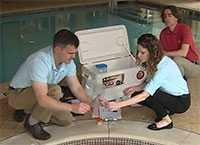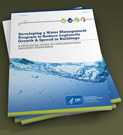Legionnaires’ (LEE-juh-nares) disease is caused by a type of bacterium called Legionella (LEE-juh-nell-a). The bacterium is named after a 1976 outbreak, during which some people who went to a Philadelphia convention of the American Legion suffered from a new type of pneumonia (lung infection) that became known as Legionnaires’ disease. A milder infection, also caused by Legionella, is called Pontiac fever. The term “legionellosis” (LEE-juh-nuh-low-sis) may be used to refer to either Legionnaires’ disease or Pontiac fever.
Toolkit to Develop a Legionella Water Management Program
Environmental Investigation Videos

CDC has developed six instructional videos on various environmental aspects of legionellosis outbreak investigations.
ELITE Program

The Environmental Legionella Isolation Techniques Evaluation (ELITE) Program was created as a way for laboratories to test their Legionella isolation techniques against standardized samples.
- Page last reviewed: June 6, 2016
- Page last updated: October 2, 2017
- Content source:


 ShareCompartir
ShareCompartir

